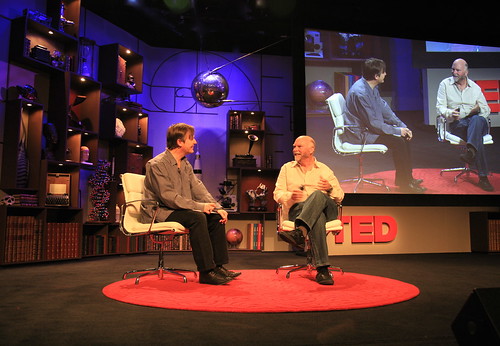 Craig Venter gave a lecture at the Oxonian Society in New York Wednesday night. During the Q&A session afterwards, an intrepid reporter from Discover Magazine asked the question about "fourth generation biofuels" that I have been wanting ask. When do we get these things?
Craig Venter gave a lecture at the Oxonian Society in New York Wednesday night. During the Q&A session afterwards, an intrepid reporter from Discover Magazine asked the question about "fourth generation biofuels" that I have been wanting ask. When do we get these things?
[D]uring his talk, Venter sketched out a plan to copy genes from deep-sea microbes to produce organisms that could slurp up highly concentrated carbon dioxide and spew out hydrogen gas–killing two environmental birds with one stone by simultaneously providing clean energy and drawing down current levels of greenhouse gases in the atmosphere to more bearable levels. The first step towards this goal will be to compose a genome on a computer, synthesize it from scratch, and insert it into a microbe without killing it. I’ve been wondering when Venter will take that step (see my conversation with him last fall on Bloggingheads.tv). Back then, Venter said some time in 2008. During the Q&A after his talk, I asked how the experiment was going. He said he still hoped to finish it this yearThis year. Or within 5 months. They must be making significant progress if he hopes to have it done that soon. Which is good because I am getting impatient.
On another note, I have been describing Venter's "fourth generation biofuels" as genetically modified algae, Venter himself has referred to them as "genetically engineered algae." From the description given in Discover Magazine it sounds like the organism will have a completely synthetic genome. More accurately it is a genome of pre-existing genes compiled in a novel way. On the other hand, the organism mentioned above also produces hydrogen? The genetically engineered algae are designed to produce oil. Maybe the reporter got it wrong or maybe Venter is referring to a different project.



















